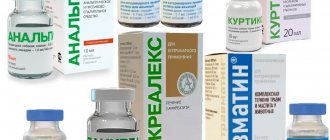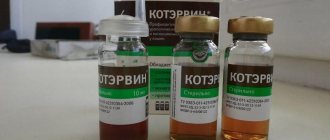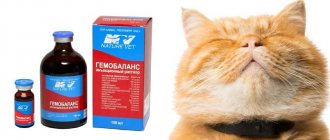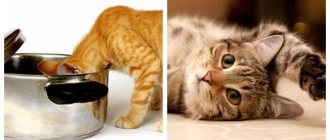July 29, 2020
Infusion therapy is one of the most important and widespread methods of maintenance therapy in cats and dogs, used for a very wide range of diseases and pathological conditions.
In veterinary practice, the method consists of introducing medicinal solutions (usually subcutaneous or intravenous) into the body. It is used for violations of water-electrolyte, acid-base balance.
Goals of fluid therapy
In a healthy body, organs and systems work in harmony, the ratio of water, electrolytes, and other substances that make up the blood plasma is constant - this state is called homeostasis - the constancy of the internal environment. When exposed to traumatic factors, this ratio can be disrupted, which causes a whole chain of disturbances in the functioning of the body.
The goal of infusion therapy is to achieve the maximum possible restoration of natural water-electrolyte and acid-base balance by introducing the necessary substances and medications in order to ensure the most effective functioning of organs and systems and minimize the impact of damaging factors.
In addition, infusion therapy can affect blood supply - the quantity and fluidity of blood, which is important, since when blood circulation is disrupted, tissues begin to experience a lack of oxygen and nutrients and intoxication with the products of chemical processes occurring in cells. Thanks to the intake of medicinal solutions, toxic substances that have entered from the outside or formed inside the body are eliminated.
In addition, some drugs necessary for treatment can be administered to the animal exclusively intravenously; in any case, infusion therapy will be indicated for such a patient.
Causes and symptoms of salt deficiency
The daily requirement for cats and kittens is at least 0.3% chloride and 0.2% sodium. In many foods this percentage is even exceeded. If pets eat industrial food regularly, then they should not have a deficiency of chlorine and sodium. However, during prolonged diarrhea or vomiting, animals' bodies lose large amounts of minerals, which can be hazardous to health.
A lack of sodium chloride makes your cat's blood thicker because some of the water is lost and absorbed by the tissues. A significant lack of fluid causes muscle spasms, convulsions, and disruption of the nervous system and blood circulation in the animal. The animal quickly loses weight and suffers from increased gas formation in the intestines. Kittens experience growth retardation and weakness.
In these cases, the cat must be shown to a veterinarian. The specialist will tell you how and how to treat the disease.
Indications for infusion therapy
There are many indications for the use of infusion therapy. Conditions in which its use is indicated are:
- dehydration. Diarrhea, vomiting, impaired excretion of fluid by the kidneys and other conditions can cause intense loss of water by the body, which does not have time to be replenished. In this case, the animal is advised to administer large volumes of solutions to compensate for the rapid loss of fluid;
- shock. In a state of shock, the patient needs urgent administration of large volumes of crystalloids, colloids or other solutions to fill the space inside the vessels and increase insufficient blood circulation;
- surgical intervention. When an animal is under anesthesia during surgery, the normal processes for maintaining a constant internal environment are disrupted. A dropper for a cat or dog is necessary to restore normal venous circulation, replenish the lack of fluid that occurs during an operation during which the animal cannot drink, and correct the effects of drugs used for anesthesia;
- intoxication. With vomiting and diarrhea, the body loses a large amount of fluid, as well as a number of electrolytes, such as chlorides, potassium, sodium, bicarbonates, in addition, the absorption of water and minerals in the intestine is impaired, which also leads to dehydration, hyponatremia, hypokalemia, etc. . In addition, in case of poisoning and infectious diseases, the intake of large amounts of water contributes to a more rapid elimination of toxic substances that have entered the body or formed as a result of the vital activity of pathogenic microorganisms;
- injuries of various nature. Injuries often result in significant blood loss, and fluid resuscitation is known to be a safe method of restoring fluid volume in the body. This method was used before the advent of reliable blood transfusion techniques, is still widely used and in some cases can give very good results;
- disruption of the supply of nutrients to the body. If for some reason the animal is not able to eat on its own, so-called “parenteral” (intravenous) nutrition is used, designed to enable the body to receive the necessary nutrients;
- violation of the quantity and ratio of vital substances in the body. In a number of diseases, the composition of the internal environment may change; in this case, infusion therapy should help replenish the missing amount of necessary substances or restore their balance by introducing a substance that has the opposite effect.
Thus, we can say that the introduction of solutions into the body is indicated for the treatment of a very wide range of diseases: infectious (to replenish lost fluid and electrolytes and remove toxic compounds), chronic (to normalize the balance of substances that make up biological fluids), injuries, intoxications, etc. .d.
In what cases is it used?
It is allowed to administer the drug into the animal’s body through a dropper system.
It is possible to inject saline into a pet subcutaneously, and also give intravenous injections. The instructions for use indicate that sodium chloride can be dropped into the cat's nose, thus performing rinsing. If a kitten or adult feline lacks sodium chloride, the veterinarian will prescribe a drip with saline. Indications for use of the drug are the following pathological conditions in a pet:
- dehydration associated with prolonged diarrhea, vomiting or burns;
- a sharp decrease in the amount of fluid in the cat’s body due to severe bleeding;
- rehabilitation period after surgery;
- signs of intoxication;
- state of shock;
- inflammatory reactions in the cat's body.
Subcutaneous infusion
Subcutaneous infusion can be given to cats and dogs that do not require large volumes of fluid; Not suitable for large animals, dogs and cats that are in serious condition and have severe dehydration. Typically recommended for subacute conditions and chronic diseases. Only solutions that do not irritate tissue are injected subcutaneously.
The solutions are administered using a large-volume syringe and an injection needle (usually a butterfly needle) into the space between the skin and the underlying tissues, usually in the withers area. A swelling forms at the site of injection of the solution; when touched, you can feel the liquid under the skin. Over the course of several hours, as the body consumes the missing substances, the swelling decreases and then disappears altogether.
What problems may arise when installing an IV?
Cats are suspicious and freedom-loving animals. Any fixation of the body can send the animal into a frenzy. The procedure itself lasts from 5 to 10 minutes. The animal's mobility can lead to the needle breaking off. This doesn't happen often. That’s why it’s so important to securely secure your pet. But you can give sedatives before the procedure only in consultation with a specialist.
It is necessary to strictly observe the sterility of the IV instrument. A dirty needle or drip system can cause an abscess. This is a very undesirable complication that significantly worsens the condition of an already weakened pet.
Intravenous infusion
The most common and most preferred option for introducing solutions into the body, usually called a “dropper”. It is used for cats and dogs in serious condition, with rapid and severe dehydration, acute diseases and in other cases. Allows you to administer a given amount of solution per unit of time, including for a very long time, for many hours, does not cause discomfort to the animal, and is painless for it.
Injected drugs quickly enter the body and are distributed throughout it. However, at the same time, intravenous infusion requires constant monitoring of the patient’s condition, often requires a long stay in the hospital of a veterinary clinic, and access to the venous bed is required. To carry out such an infusion, the patient is given an intravenous catheter, with which he will need to walk all the time until there is no longer a need to administer solutions and medications, and change it every 5 days. The solution can be administered either using a dropper (generally, such a dropper is needed for a large dog that needs a large volume of liquid), or using an infusion pump - a device that ensures the administration of a strictly defined amount of solution per unit of time.
Sometimes solutions and drugs can be administered not by drip, but by stream - directly with a syringe into an intravenous catheter; this method is used if the patient needs to receive only drugs, and not a large volume of solutions.
Are there any restrictions?
If a fluffy has pulmonary edema, this drug should not be used.
To prevent saline solution from leading to serious complications in a cat, you need to know how and when to use it. Veterinarians strictly prohibit the use of the drug in pets that have excess sodium in their blood. Saline solution is also contraindicated for pets with cerebral or pulmonary edema, which can cause complications or death. It is equally important to strictly follow the dosage prescribed by the specialist. If owners inject the cat with more solution than required, the following consequences are likely:
- overhydration, characterized by an increased volume of water in the blood;
- acidosis;
- decrease in potassium concentration.
Basic solutions for infusion therapy
Solutions intended for infusion therapy are divided into crystalloid and colloid. Crystalloid solutions are an aqueous solution of ions and organic components of blood buffer systems. They often contain calcium, sodium and magnesium in small concentrations, allowing large amounts of solution to be safely administered over a short period of time.
Intravenous administration of such solutions helps to quickly restore the volume of fluid inside the vessels. Subsequently, the fluid leaves the lumen of the vessels and is distributed in the tissues. Crystalloid solutions are iso-, hypo- and hypertonic. Hypertonic solutions cause fluid to escape from cells into the bloodstream, which increases the volume of fluid in the lumen of the vessel. A small amount of solution is needed for this purpose, which is very convenient when the animal needs to quickly restore normal blood circulation. In addition, hypertonic solutions can have a beneficial effect on some physiological indicators and parameters of the immune system.
The most common solutions of this group: sodium chloride 7.5%, 10%, mannitol 25%, glucose 10%, 40%. Hypotonic solutions have the opposite effect - free fluid enters the cells. This effect helps remove excess water from tissues and blood vessels, for example, when swelling begins. The most commonly used hypotonic solutions are glucose 2.5%, 5%, sodium chloride 0.25%. Isotonic solutions are the most commonly used group of solutions; their osmolarity is equal to the osmolarity of blood plasma, due to which fluid does not move from cells to the bloodstream or in the opposite direction.
Because of these properties, such solutions can be used without the risk of disturbing the balance between intracellular and extracellular fluid. They are used for almost all tasks of infusion therapy: replenishing fluid deficiency, restoring water-electrolyte, acid-base balance, etc. This group includes the most commonly used solutions: sodium chloride 0.9% (saline), Ringer's solution, isotonic sterofundin.
Colloidal solutions contain large molecules of organic substances, causing rapid flow of liquid into the vessels without leaving the bloodstream, while retaining it there for a long time. This group includes dextrans, gelatins, hydroxyethyl starches, and also human serum albumin. These solutions are used less frequently than crystalloid ones, and many of these drugs have a number of side effects.
Sodium chloride - what is it?
Therapeutic saline solution is considered an excellent conductor of electricity. Thanks to it, the water-electrolyte and alkaline balance is maintained.
The preparation of saline solution is quite simple - add table salt little by little to distilled water until the required concentration is obtained. The main thing is to introduce the salt in portions so that it completely dissolves, so that a precipitate does not form.
In some cases, the body may not have enough sodium chloride. Its deficiency can be caused by:
- frequent vomiting;
- severe burn;
- large loss of fluid;
- gastrointestinal tract infection;
- cholera;
- hyponatremia.











